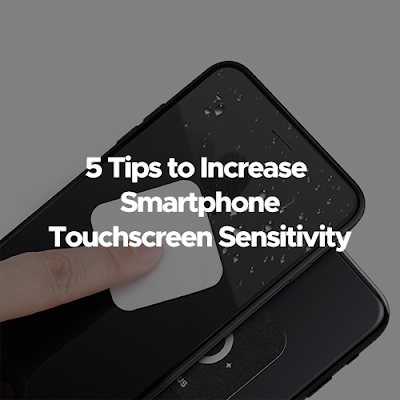5 Tips to Increase Smartphone Touchscreen Sensitivity

Having hard time navigating your smartphone? You're not alone, because most Android smartphones users often complain about poor touch response even if they are using an expensive high-end mobile phone powered with latest android operating system. A Smartphone touch-screen becomes unresponsive in two scenarios - hardware fault or software issue. Hardware problems may not be easy to fix and usually require a replacement of the entire touch-screen. If the problem is software related, then it can be fixed by following some simple measures, applying patches or through few tweaks. Some of the ideal tips to improve the touch-screen sensitivity are discussed below.
1. Applying Calibration to device
Major manufacturers provide a calibration tool within the phone to do a recalibration of touchscreen. If over time, you are observing degrading touch sensitivity or responsiveness, then recalibrate the touch screen to fix it. Since gravity and other factors affect the working of touchscreen, follow the instructions provided with calibration tool to do that properly. Recalibration is not a complicated procedure and can be easily performed by all. Most often than not, it will enhance the performance of your touch-screen. To adjust calibration of your touchscreen easily, just search and download Touchscreen Calibration app on Play Store.
2. Clean smartphone screen
One of the shallow reasons for diminishing sensitivity of smartphone's touch-screen is the grease and dirt that accumulates on it. Keeping your phone’s screen neat and tidy can also preserve it performance. Regularly cleaning it with soft-cloth or cotton-buds dipped in cleansing-solutions is the ideal way to eradicate the dirt and debris from the screen. Also, using some kind of protection like a screen-guard or screen-protector can keep your screen sensitive enough.
3. Using Thinner Screen Guard
While various types of screen protectors and screen guards can be available for your phone, it is important to choose the one which does not hamper the sensitivity of the screen. Though thicker screen-guards give your screen better protection, they might also reduce its sensitivity. Choose the one that is thick enough to protect your phone’s screen, yet does not affect its performance.
4. Updating to the latest Firmware
Latest updates bring fix to certain troublemaking parts of a software that were previously resulting in non-functioning or malfunctioning phone features or touchscreen. Phone manufacturers when release updates, users should install those updates to improve the performance of the phone and debug any software code problem which was left undone while creating it. If you are experiencing any touch related problem on your new phone, you should check for the updates and if available, apply them. There are great chances that if the problem is software related, the manufacturer is already aware of that has released a solution for it. Usually, firmware updates can be found on Settings > About phone > System Updates.
5. Avoid Hitting, Bending or Throwing Phone
You should not use your phone to hammer nails in wood or tap on doors or desks. They are not meant for that. If you put a huge smartphone in your tight jeans or trousers pocket, make sure you pull it out before sitting or kneeling down or your actions may bend and damage the phone or phone touchscreen. Avoid throwing the phone or smashing it on the floor.
Do you have other useful tips other than this? You can share it by leaving a comment below.
Credits: miui
5 Tips to Increase Smartphone Touchscreen Sensitivity
 Reviewed by adm
on
18.45
Rating:
Reviewed by adm
on
18.45
Rating:
 Reviewed by adm
on
18.45
Rating:
Reviewed by adm
on
18.45
Rating:

Post a Comment